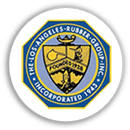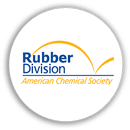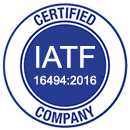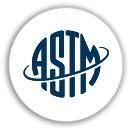Understanding ASTM D3182: Standard Test Methods for Rubber Compounding Materials
ASTM D3182 is a key standard developed by ASTM International that focuses on the testing and preparation of rubber compounding materials. This standard outlines the methods for preparing vulcanized rubber samples and evaluating their properties, ensuring consistency and reliability in rubber products. Industries such as automotive, construction, medical, and manufacturing rely on ASTM D3182 for assessing the quality of rubber compounds used in their products.
Purpose and Scope
The primary objective of ASTM D3182 is to establish a standardized approach for preparing rubber compounds and evaluating their mechanical and physical properties. The standard covers a variety of test methods used to assess the quality and performance of rubber materials, ensuring they meet the required specifications for use in various applications.
This standard is particularly critical because rubber products are often exposed to demanding conditions in their final use, and testing helps manufacturers determine how these products will perform in real-world scenarios.
Key Components of ASTM D3182
ASTM D3182 specifies a series of test methods that cover different aspects of rubber preparation and evaluation:
- Preparation of Standard Vulcanized Rubber: One of the first steps in testing rubber compounds is preparing standard vulcanized rubber. This process ensures uniformity across samples, allowing for consistent testing conditions. It serves as a baseline for evaluating the performance of rubber compounds.
- Evaluation of Physical Properties: The standard includes methods for evaluating various properties of vulcanized rubber, such as:
- Tensile Strength: The maximum stress a rubber material can withstand before breaking.
- Elongation at Break: The extent to which rubber can be stretched before breaking.
- Hardness: The resistance of rubber to indentation, commonly measured using a durometer.
- Compression Set: The ability of rubber to return to its original shape after being compressed.
- Tear Strength: The material’s resistance to propagation of a tear.
Importance of ASTM D3182
The significance of ASTM D3182 lies in its ability to ensure the quality, safety, and performance of rubber products. Manufacturers use this standard to test raw rubber compounds and finished products to ensure they meet both regulatory and industry-specific requirements.
By adhering to these standardized test methods, companies can confidently produce rubber products that will perform well under typical operating conditions, from automotive tires to medical seals and gaskets. This uniformity is essential in industries where high standards for durability and safety are required.
Test Methods Under ASTM D3182
The ASTM D3182 standard outlines several important test methods for evaluating rubber materials. These methods are critical for understanding how a rubber compound will perform once it is vulcanized. Some of the primary test methods include:
- Test Method A: Preparation of Standard Vulcanized Rubber
- Test Method B: Evaluation of Tensile Strength and Elongation
- Test Method C: Determining the Hardness of Vulcanized Rubber
- Test Method D: Measuring the Compression Set of Rubber
- Test Method E: Evaluation of Tear Strength
These test methods are essential for assessing rubber properties such as flexibility, durability, and strength. Each test is designed to assess specific characteristics that are important for determining whether a rubber product is suitable for its intended application.
Who Uses ASTM D3182?
The ASTM D3182 standard is widely used across various industries that rely on rubber components. Some of the sectors that benefit from this standard include:
- Automotive Industry: Tire manufacturers, automotive parts suppliers, and companies that produce seals, gaskets, and other rubber components rely on ASTM D3182 to test the durability and performance of their products.
- Construction Industry: Companies that manufacture roofing materials, flooring, and waterproofing systems use ASTM D3182 to ensure the rubber used in these products meets performance standards.
- Medical and Pharmaceutical Industries: Rubber seals, gaskets, and tubing used in medical equipment must meet stringent quality and safety standards. ASTM D3182 helps ensure these materials are safe and reliable for use in healthcare.
- Consumer Goods Industry: Manufacturers of rubber footwear, sporting goods, and other consumer








